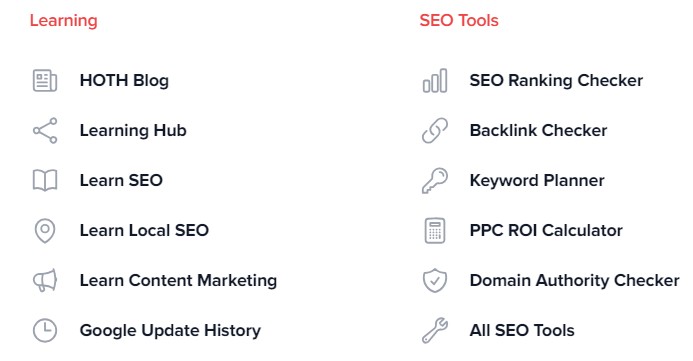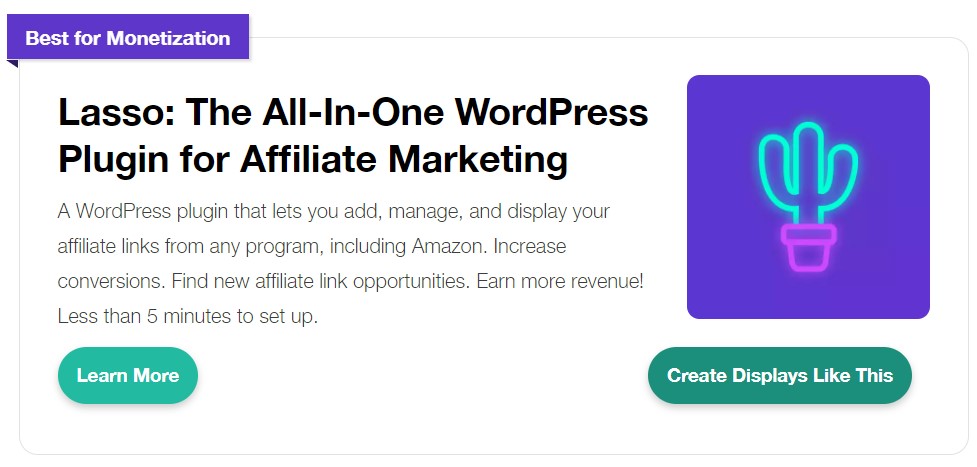If you want to hit the ground running with your affiliate marketing business then it’s important to have access to a wide range of resources that can save you time, help you promote products, and track your progress, so you can make a healthy profit. Here are 10 Strategies to Boost Your Affiliate Marketing Productivity…
This post may contain affiliate links. As an Amazon Associate, I earn from qualifying purchases. See Affiliate Disclaimer.
1. Identify your Most Important Goals
This helps you prioritize your tasks and focus on what’s important.
Tip: It’s easy to get caught up in designing a beautiful website but at the beginning, you need to create content, lots of it, regularly. The beautiful website can come later. So set your publishing goals for 3+ days a week and start.
Important Steps
Once you’ve published the post or page enter the URL into Google’s URL Inspection Tool. This is part of Google Console, which helps you monitor your website’s performance.
You should also join Google Analytics which keeps track of your visitors and shows which posts are performing best (and least). So you can focus your efforts on what works best.
Scheduling Tools
Every time you publish make sure you also post on your Social Media channels. Do this step every time you publish.
To speed this up you can use a scheduling tool like Sprout Social. This manages all your social media channels. It can publish and schedule updates and give you the analytics you need to track your audience and ROI (return on investment).
2. Stay Focused on Your Niche
Show yourself as an expert in your niche by creating very focused content. Organize your website’s content around a specific set of topics.
This makes it easier for search engines to understand your content’s intent and relevance. It’s also crucial for Search Engine Optimization (SEO).
Tip: Come up with 3 main categories for your website.
For example, for a Travel Photography Website start by writing 30 posts about each of the following three categories:
1. People Photography – Capture portraits of locals and fellow travelers, tell their stories, and convey the human aspect of the destinations you visit.
2. Culture Photography – Highlight the unique customs, festivals, and culinary traditions of places you visit. Capture the way people live in different parts of the world.
3. Location Photography – Showcase the landscapes and architecture of places you visit. From wide-angle shots of natural landscapes to detailed architectural designs, this visually represents the ‘where’ of your travels.
These categories are not just about the photos, but the stories they tell and the connections they forge. Your audience will love your stories. So what are your 3 main categories?
3. Create a Content Calendar
Choose a product or service you want to promote. Then create a landing page for this product or service.
Then start a 10-day content calendar with 10 posts that have captivating titles, creative content, and links to your landing page for the product/service.
Tip: You can ask AI to create the 10-day calendar. I use Writesonic to help with my planning and writing. Do this every 10 days. You’ll never run out of ideas.
You can use Excel or Google Sheets to keep track of:
- Posts (I separate these out into categories)
- Upcoming posts – the 10-day schedule
- Affiliates you’ve joined, and importantly their commission and cookie time.
4. Set a Schedule and Become a Creature of Habit
Create a schedule that works for you and stick to it. This helps you stay focused and avoid procrastination.
- Work out which days and times work best for your research and writing.
- Publish the same days and times every week (Google and your followers then trust you).
- Send out your e-mail newsletter regularly. Mailchimp, GetResponse, and ActiveCampaign are all popular e-mail marketing platforms.
5. Keyword Tools to Speed up your Productivity
Keywords are super important for affiliate marketing. You want to reach the people who are interested in your niche and the products and services you promote.
For example, if you’re promoting a new laptop, you might use buyer-intent keywords like “laptop deals,” “best laptops,” or “cheap laptops.”
When you use the right keywords, your website or blog posts show up higher in search engine results pages (SERPs). This means more people see your content and click on your affiliate links, which leads to more sales. So keyword tools are vital. Here are two I use…
The Hoth Free Tools
The Hoth helps businesses get found online with SEO, content marketing, and PPC services. They also have a fantastic array of free SEO and keyword research tools. This is the link to their free Google Keyword Planner Tool.
Jaaxy
Jaaxy is another keyword research tool I use that’s free as part of the premium Wealthy Affiliate Suite.
Jaaxy helps you discover low-competition keywords that can drive high volumes of traffic to your website, giving you an edge over your competitors.
This tool also provides you with insightful SEO data, site rank, search analysis, brainstorming, etc. that make your content creation efforts more strategic and effective. Try it out here…
6. Track your Links
Link tracking shows you the performance of your affiliate links. You turn the affiliate link into a custom link so you can see how many clicks each one receives and when.
You can see which links are performing best and which links are doing badly. You can then also edit your content if you’re seeing lots of clicks but no purchases. Because in the end, clicks are nothing without the buy at the end!
So tracking links helps you boost your commissions and rev up your marketing efforts.
Pretty Links
- Easy to use: Pretty Links is a simple and easy-to-use plugin that can be installed and configured in minutes.
- Powerful tracking: Pretty Links provides detailed tracking reports that show you how many clicks your links have received, where they came from, and what devices were used.
- Customizable: Pretty Links allows you to customize your links with your own domain name, keywords, and branding.
- Affordable: Pretty Links is a freemium plugin, with a free plan that offers basic features and a paid plan with more features.
Lasso
The Lasso link-cloaking plugin is an alternative to Pretty Links. You can also create short, branded links that track clicks and conversions. It’s a paid tool and costs more than Pretty Links, but it has other cool features.
For example, you can create designer affiliate info boxes (see below), Amazon integrations, revenue analytics, and lots more.
7. AI Can Boost Your Affiliate Marketing Productivity
AI is a game-changer for speeding up content creation and productivity. You can use AI to create fun Social Media posts, generate marketing plans, create beautiful artwork, and come up with a publishing schedule in seconds!
Writesonic
As I mentioned earlier Writesonic is an affordable AI service I pay for monthly. It has lots of features to help with content creation, images, whole blog posts, ad creation, Amazon product features, SEO keyword generator, content rephrasing, and lots more.
Here’s what Writesonic said about itself!
“Just imagine, with Writesonic, you never have to worry about writer’s block again. It’s like having your very own personal writing assistant, ready to whip up original, high-quality content anytime you need it!”
Bard and Bing
I also use Google Bard and Bing Chat which are both free and are handy to get a different viewpoint. The Bing art generator is incredible – here’s a pic ‘we’ created!

8. Design Made Easy
Elementor is a drag-and-drop WordPress page builder that makes it easy to create visually appealing and responsive pages.
This is a great tool for beginners or advanced affiliate marketers who want to quickly create high-quality landing pages and blog posts.
Canva is a cool design tool. Jazz up your blog posts with stunning, eye-catching graphics made effortlessly.
As I said in Number 1, create social media posts every time you publish and Canva makes it a breeze with templates you can make your own.
You can create everything from infographics to blog banners, to Facebook posts, to Pinterest pins, to TikTok videos to YouTube shorts making your content not only informative but visually appealing too!
9. Use Templates for Everything You Do
When you’re a solo business owner you need strategies to speed up productivity. Don’t reinvent the wheel every time you write a post, share it on social media, send out an e-mail, or create a video.
Come up with templates and save lots of time.
For example, I have a Review Template, which is the intro (with problem and solution), typical questions and answers about the product/service, dynamic aspects of the product, comparisons to other products, and the conclusion with a call to action.
Tip: People often ask Google if a company is legit. So that’s one of my questions, which I answer with Yes, [the company] is a legitimate business… You might be featured on the ”people also ask”.
Here’s an example of one of the Featured Images I’ve created in Canva. I use the same template every time
10. Don’t Multi-Task
I find multi-tasking slows me down and I lose focus on the task I need to complete.
Affiliate marketing requires consistency and you need to publish a high volume of content every week. You need to feel that you’re gaining momentum.
Way too many people give up because they feel like nothing is happening. It’s true you may not see much money for a year or a year and a half.
The Income School people describe the journey like the shape of a hockey stick. At first, it’s flat and nothing happens, but once you’ve produced enough content your income graph will start heading up. So don’t give up!
SEE MORE
- How Many Social Media Platforms do I Need to Be On?
- 6 Best Website Builders for Your Online Business
- 6 Best Online Life Coaching Platforms
- Market Your Coaching Business Without Spending a Fortune
- 15 Essential Resources for Life Coaches (Paid and Free!)
- How to Create Your Irresistible Life Coaching Offer










